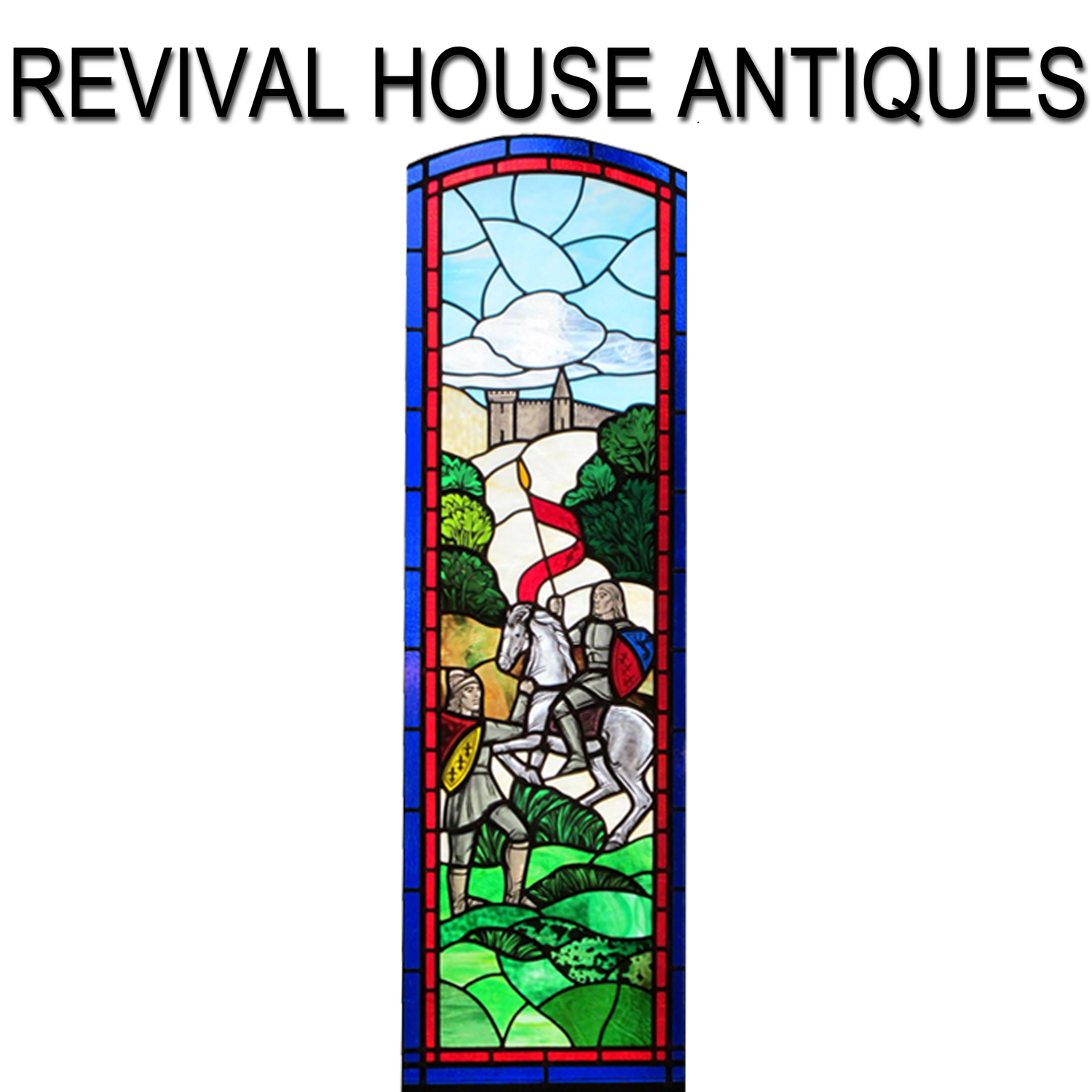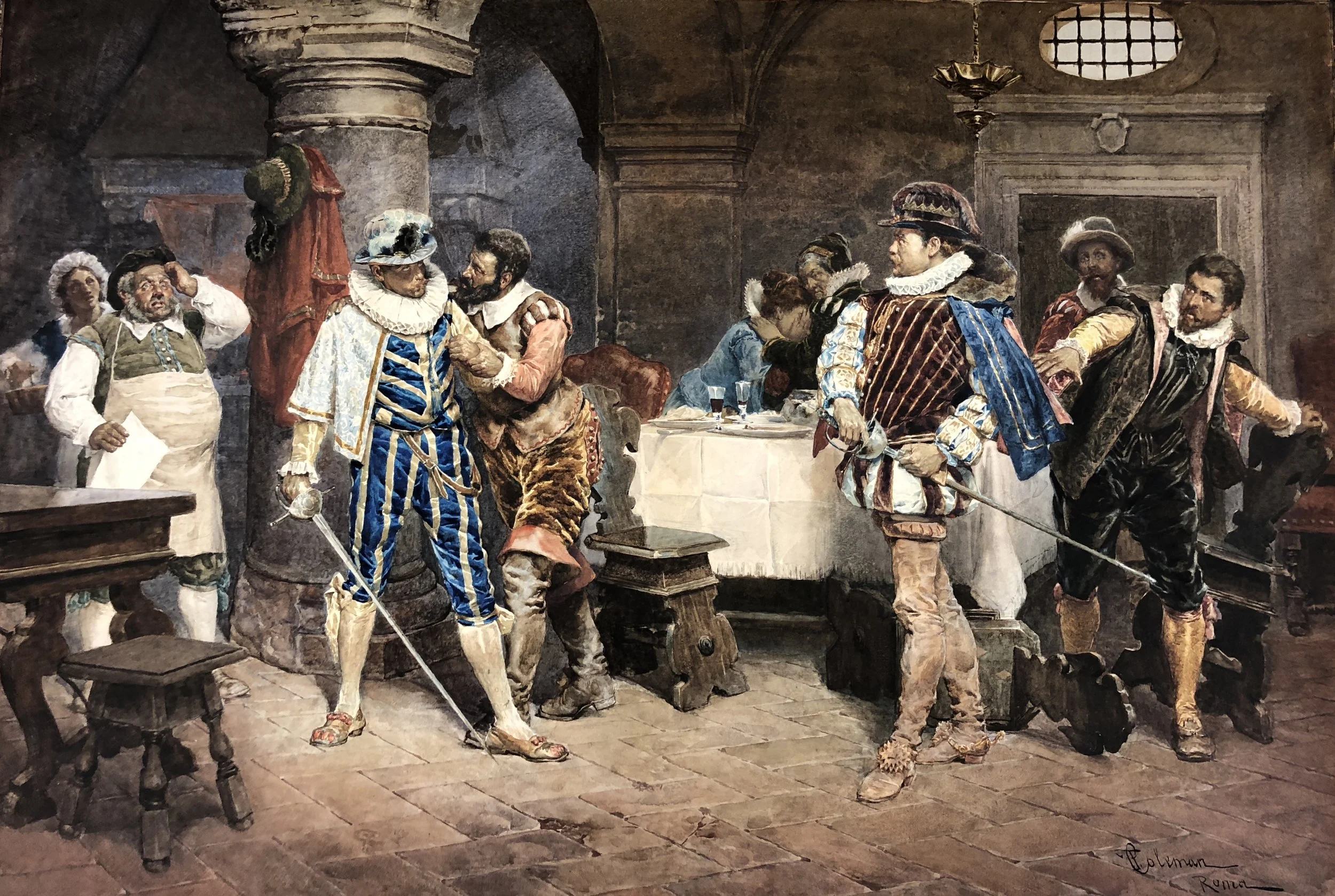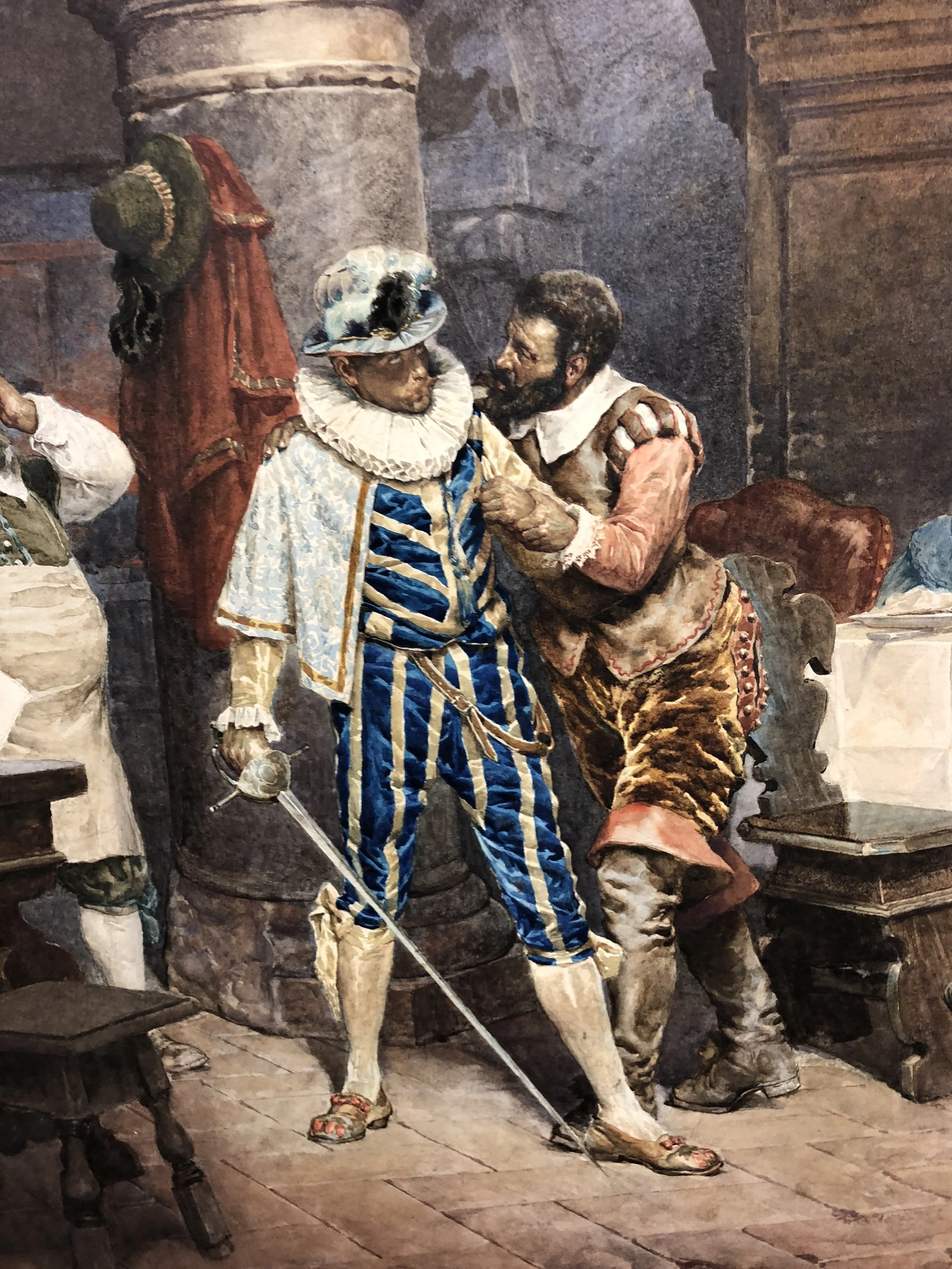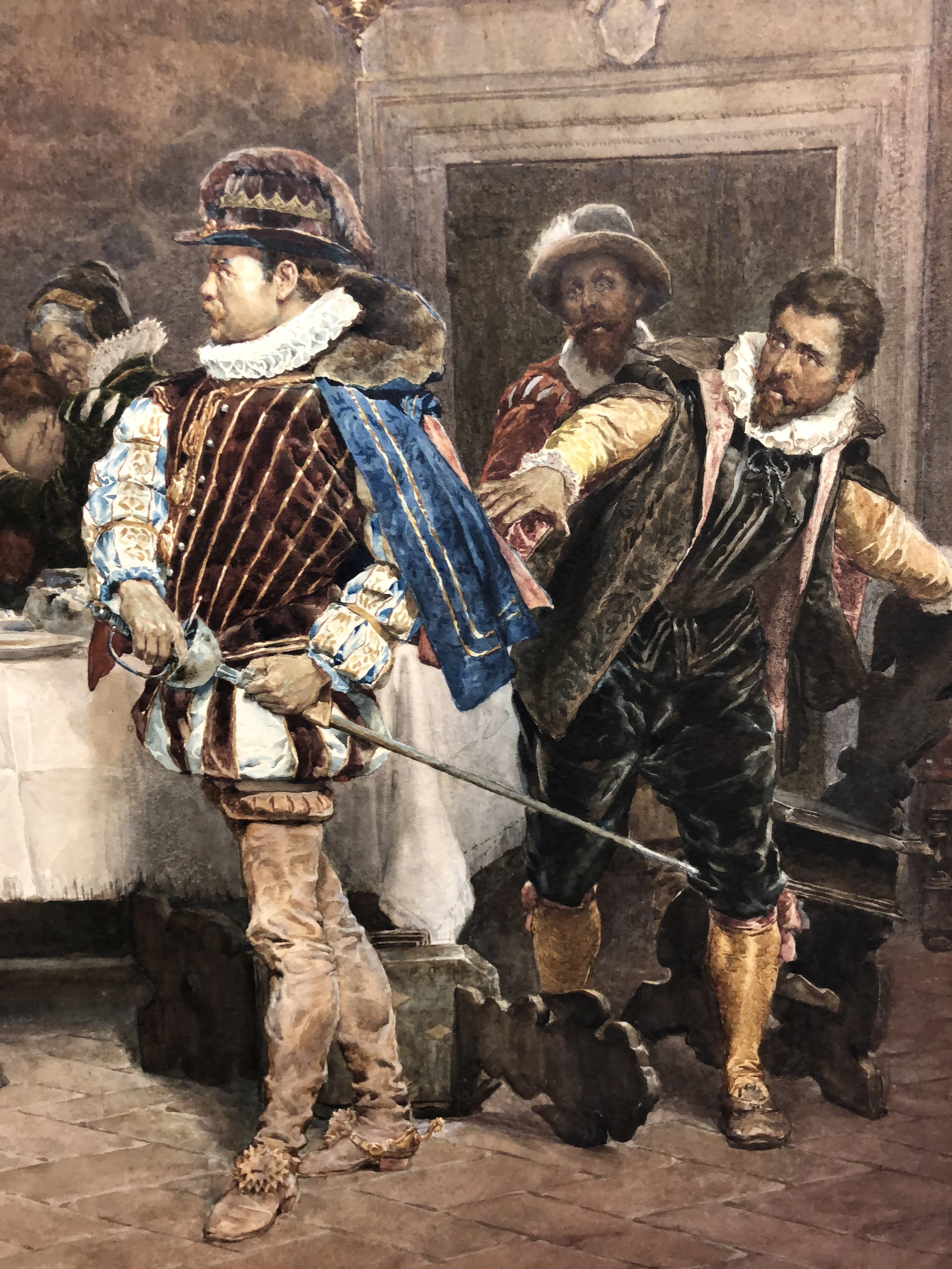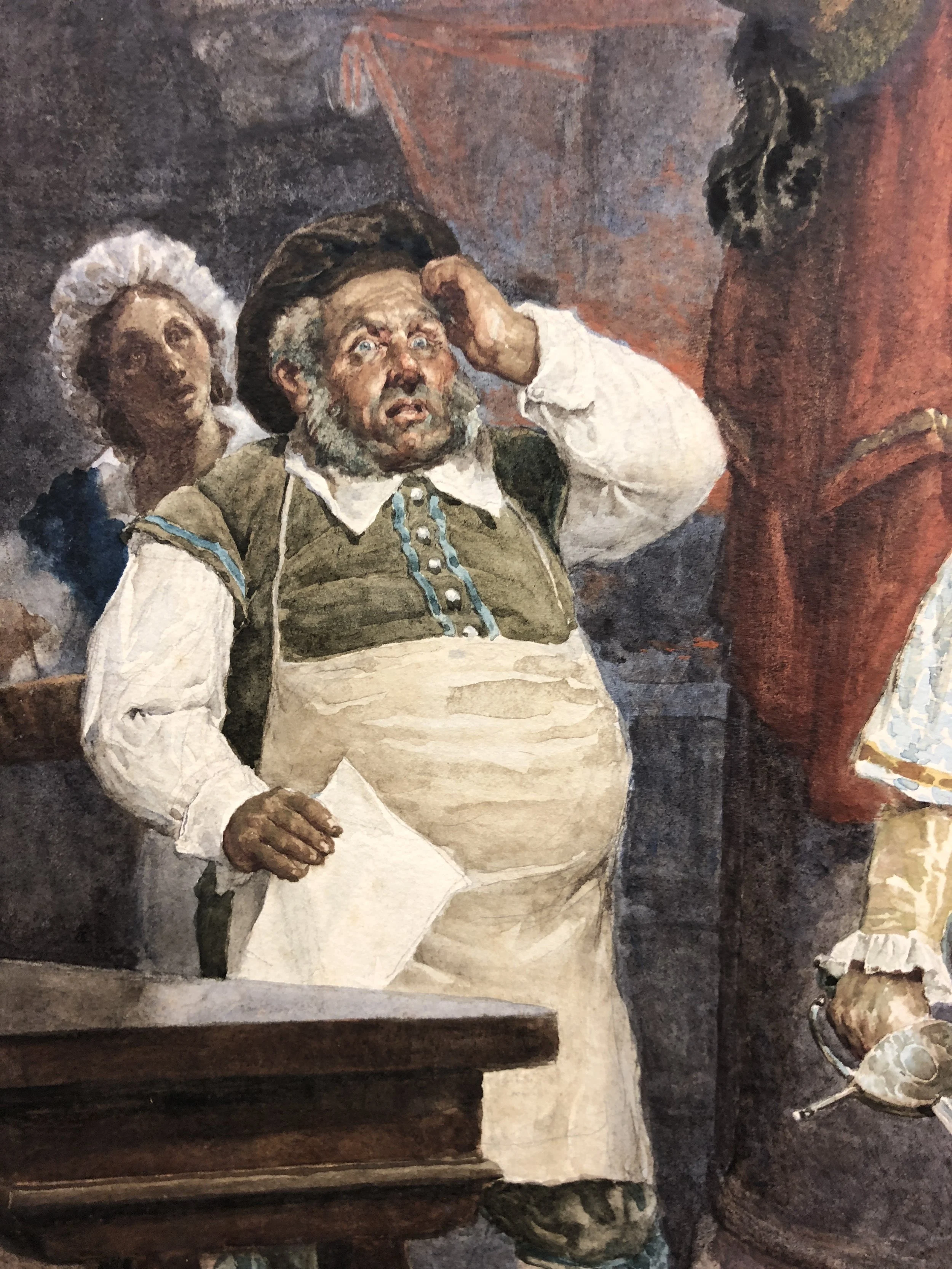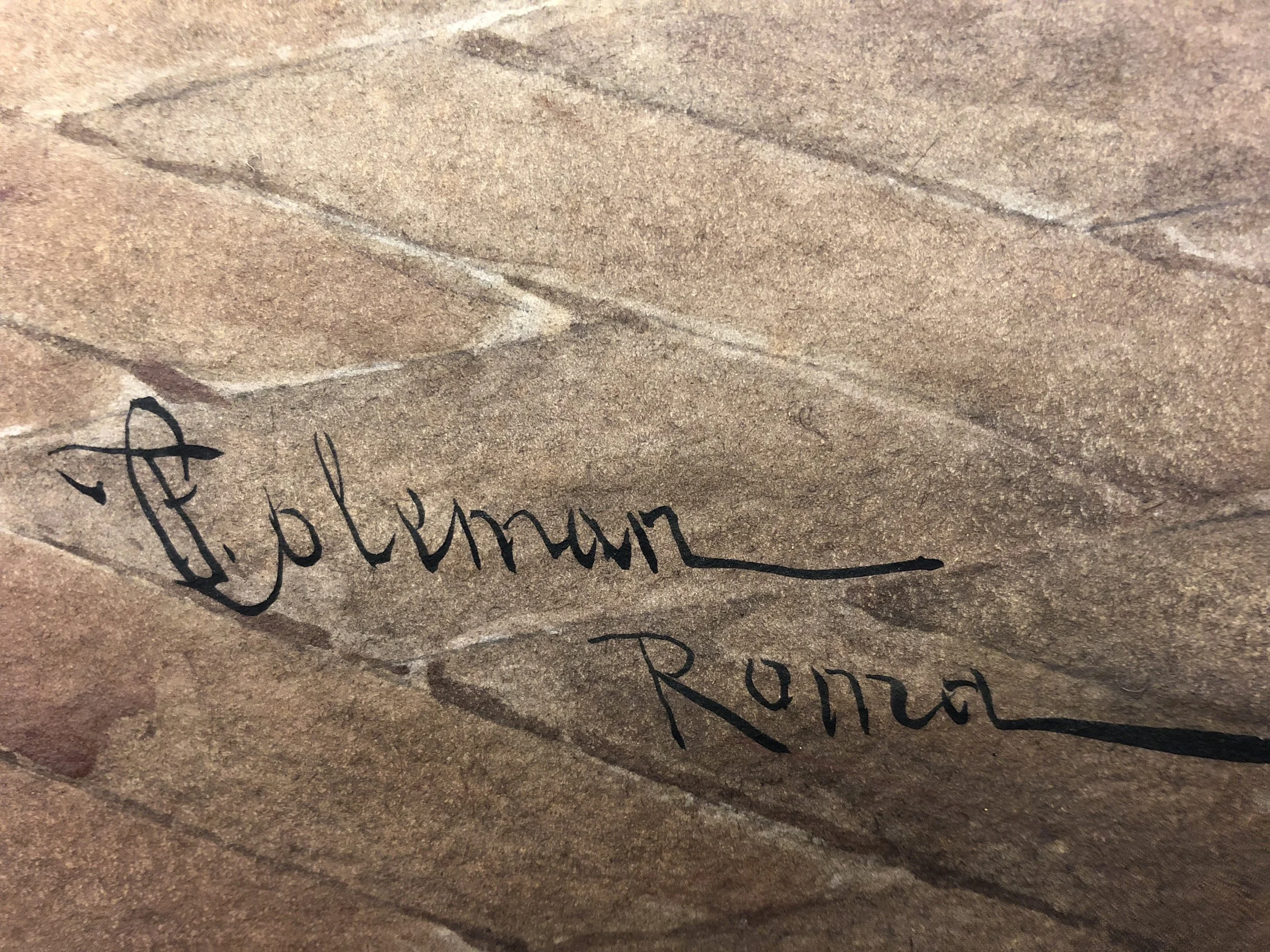Francesco Coleman, Watercolor Painting, The Duel
Francesco Coleman, Watercolor Painting, The Duel
A watercolor and gouache painting by Italian artist, Francesco Coleman (1851-1918), depicting an altercation in a dining establishment which is transforming into a duel. The two participants standing ready with swords. The man on the left in blue, gold and white striped silk with ruff stands looking toward his opponent. Only the whites of his eyes are visible, as he appears to be extremely angry. A friend holds his shoulder, attempting to coax him from violence and bring him to his senses. The man on the right, ready to draw his sword in defense, one of his friends reaching for his arm. His chair laying on the floor showing that he jumped up quickly to defend himself. To the left a heavy man holds a piece of paper, possibly the bill for the meal, hoping they will pay and take this outside. In the back a young woman cries and is consoled by an older woman. The painting shows such dynamic action that in the center of the tablecloth, a wine cork is falling in mid-action. The painting is signed by the artist with “Roma” as this would have been painted in Rome.
About the artist: Francesco Coleman (1851–1918) was an Italian painter. He was the son of the English painter Charles Coleman and brother of the better-known Italian painter Enrico Coleman. He was known as a painter, in oil and in water-colour, of the people and landscapes of the Campagna Romana and the Agro Pontino, and of oriental subjects.
Francesco Coleman was born in Rome on 23 July 1851. He was the sixth of eight children of the English painter Charles Coleman, who had come to Rome in 1831 and settled there permanently in 1835, and his wife Fortunata Segadori, a famous artist's model from Subiaco, whom he had married in 1836.
He studied painting in his father's studio, and showed a particular aptitude for water-colours. He shared this studio at via Margutta 33 with his father and brother throughout his life. He ceased all artistic activity after the death of Enrico in 1911.
He died on 9 January 1918 at his home in via Valenziani, near the Porta Salaria. He was buried in the Cimitero del Verano.
The painting measures 22” x 32” and overall with the gilt frame measures 27 1/4” x 36 3/4”. The painting and frame are in excellent condition and ready to hang.
This item includes FREE Shipping in the United States. All other areas would incur additional shipping charges.
